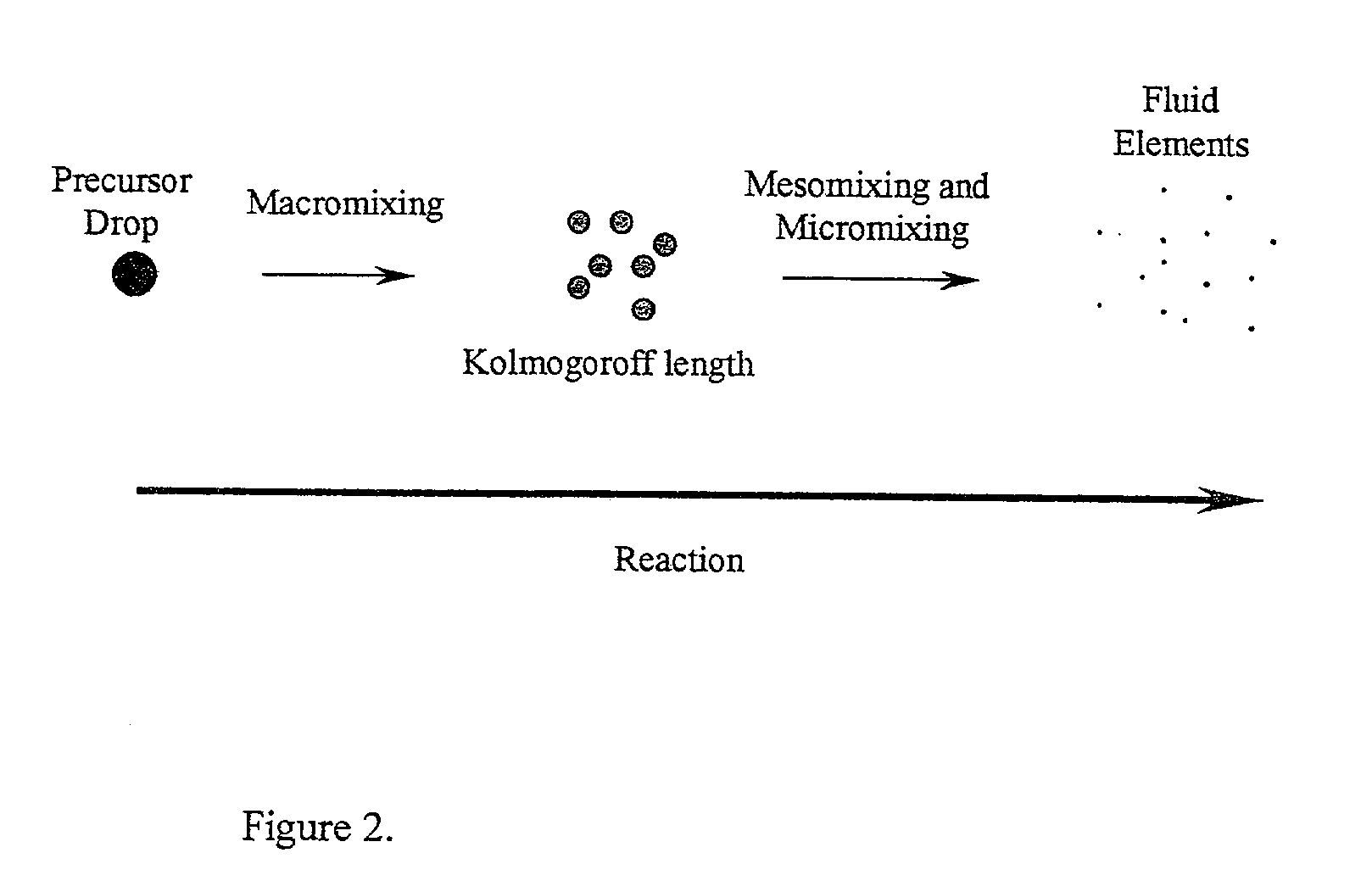Method for preparation of nanometer cerium-based oxide particles
a cerium-based oxide and nanometer-scale technology, applied in the direction of lanthanide oxide/hydroxide, chemistry apparatus and processes, transportation and packaging, etc., can solve the problems of large agglomerates, large particle size, non-uniform shape, etc., and achieve the effect of reducing the particle size of ceria particles
- Summary
- Abstract
- Description
- Claims
- Application Information
AI Technical Summary
Benefits of technology
Problems solved by technology
Method used
Image
Examples
example 1
[0054]Ammonium hydroxide aqueous solution with a concentration of 1.5·10−3 mol / g was placed in a semi-batch tank reactor. A 0.5·10−3 mol / g solution of cerium nitrate aqueous solution was the fed into the reactor (SIP feeding). There was a 20% excess of the ammonium hydroxide solution. The feeding rate was controlled by a peristaltic pump supplied by Fisher. The ammonium hydroxide solution was constantly stirred at a rate of 300 rpm with the power load of the stirrer being automatically adjusted with the changing viscosity of the slurry in the reactor. The reactor temperature was set at room temperature. Oxygen was bubbled into the reactor at a rate of 20 l / min as controlled by a gas flow-meter. The slurry was vacuum filtered and then vacuum dried at room temperature. The SSA data were found to be about 150 m2 / g and the TEM microscopy photos showed that the particle size is around 3–5 nm. This was confirmed to be the same size as a single crystal from the x-ray diffraction pattern.
example 2
[0055]The same setup as in example 1 is used. This time PIS feeding was used with ammonium hydroxide aqueous solution used as the feeding precursor and cerium nitrate solution in the reactor. The feeding rate was controlled between 0.5 ml / min to 8 ml / min. At a reactor temperature of 70° C. the average synthesized particle size was 50 nm and at a reactor temperature was of 20° C. the average particle size was 15 nm.
example 3
[0056]PIS feeding was carried out as in example 1 at room temperature, a feeding rate of 5 ml / min and a stirrer rate of 1000 rpm. When oxygen was bubbled through the reactant mixture the smallest particle size obtained was 4 nm. Without the use of oxygen the smallest particle size obtained was 12 nm.
PUM
 Login to View More
Login to View More Abstract
Description
Claims
Application Information
 Login to View More
Login to View More - R&D
- Intellectual Property
- Life Sciences
- Materials
- Tech Scout
- Unparalleled Data Quality
- Higher Quality Content
- 60% Fewer Hallucinations
Browse by: Latest US Patents, China's latest patents, Technical Efficacy Thesaurus, Application Domain, Technology Topic, Popular Technical Reports.
© 2025 PatSnap. All rights reserved.Legal|Privacy policy|Modern Slavery Act Transparency Statement|Sitemap|About US| Contact US: help@patsnap.com



